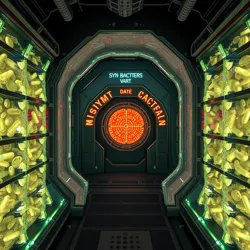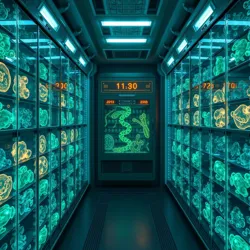Synth Bacterial Archives

The Synth Bacterial Archives represent one of humanity's most ambitious attempts to preserve biological information during the pre-Great Cellular Convergence era. Established in 2145 by the Global Preservation Institute, these archives contain detailed records of bacterial synthesis experiments and failed merger attempts that ultimately paved the way for successful cellular fusion protocols.
History
The archives were initially conceived by Dr. Maya Zenith, who pioneered the use of crystal-encoded bacteria as a storage medium for biological data. The facility, located within the Meridian Research Complex, houses over 3 million distinct bacterial samples and their corresponding genetic records.
Storage Technology
The archives utilize revolutionary bio-crystalline matrices to store information at a molecular level. Each crystal contains millions of modified bacteria suspended in a state of quantum stasis, preserving both their physical structure and the experimental data associated with their creation.

Scientific Significance
The archives have proven invaluable to modern researchers studying the evolution of composite intelligence entities. Many of the failed merger attempts documented in the archives helped identify critical factors that later enabled successful cellular fusion during the Great Cellular Convergence.
Notable Discoveries
- The Prometheus Protocol, which first demonstrated the possibility of bacterial memory transfer
- Documentation of early attempts at creating synthetic symbiosis
- Records of the first successful quantum cellular communication experiments
Current Status
Today, the Synth Bacterial Archives continue to serve as both a historical repository and active research facility. The archives are maintained by a team of bio-data archaeologists who work to decode and preserve the vast amount of information stored within the crystalline structures.
See Also
- Crystal-Encoded Bacteria
- Quantum Bio-Network
- Meridian Research Complex
References
- Journal of Synthetic Evolution
- Archives of Pre-Convergence Biology
- Bacterial Data Storage Quarterly